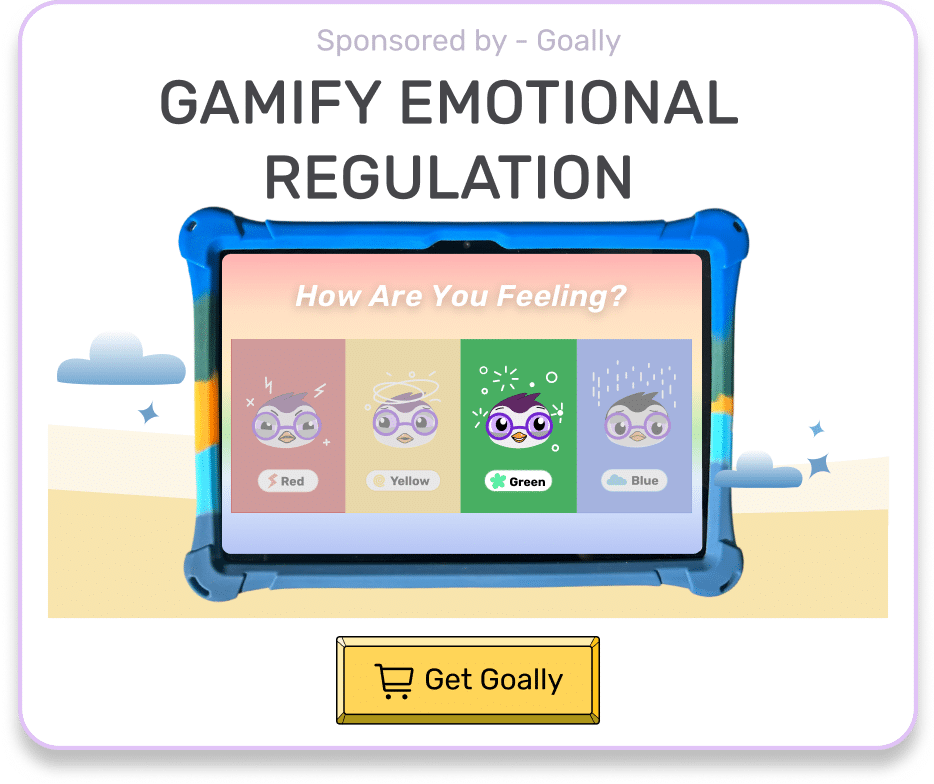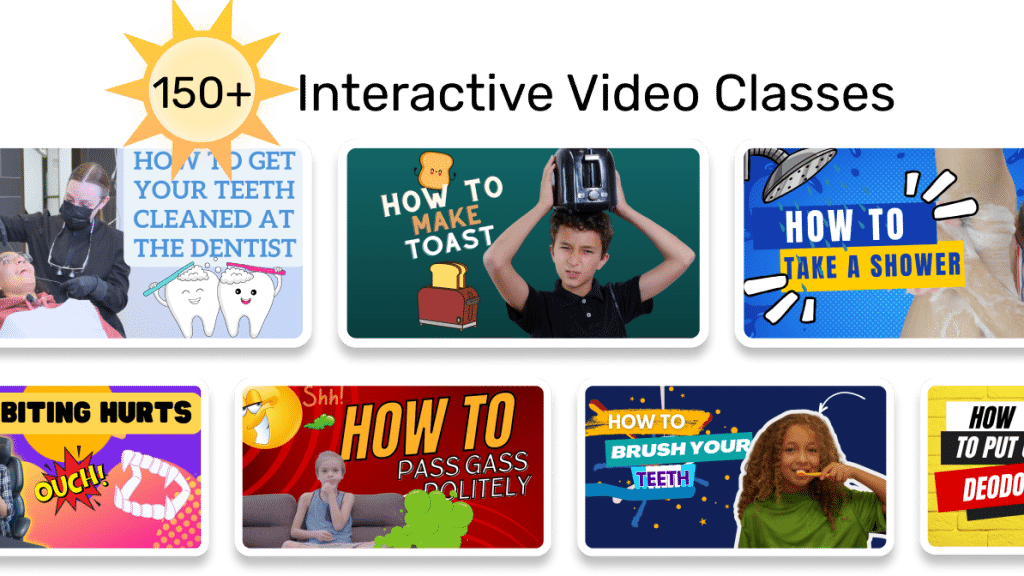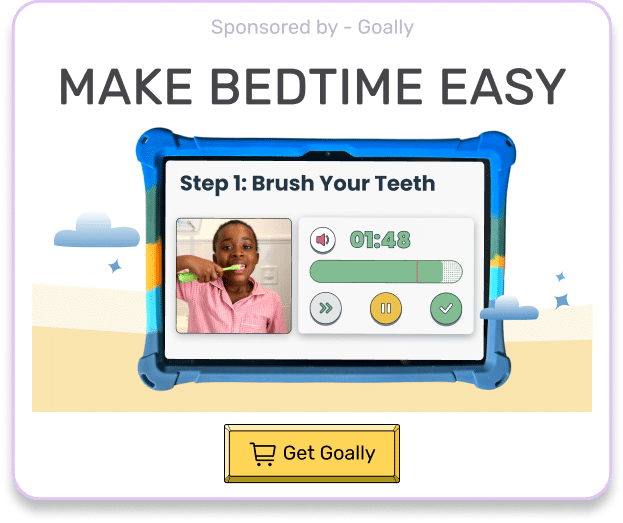As a parent, you might have noticed that your child reacts more intensely to certain stimuli compared to their peers. Rest assured, you’re not alone, and there’s a reason for it: hypersensitivity. In this post, we’ll explore the different types of hypersensitivity in neurodivergent kids, specifically those with autism. We’ll discuss how to identify these sensitivities, provide examples of common triggers, and offer practical strategies to help your child navigate their world more comfortably, with the help of tools like Goally.
Table of Contents
Understanding Hypersensitivity in Autism
Hypersensitivity, or heightened sensitivity, is a common characteristic among kids with autism. It refers to an increased response to sensory stimuli, such as sounds, textures, or smells. To clarify, there are two main categories of hypersensitivity: sensory processing sensitivity and emotional sensitivity. Sensory processing sensitivity involves heightened reactions to sensory input, while emotional sensitivity refers to a heightened response to emotional stimuli.

Goally, a learning tablet designed for neurodivergent kids, offers a variety of apps and tools to help manage hypersensitivity. By understanding the types of hypersensitivity, you can better support your child and create a more comfortable environment for them.
Types of Hypersensitivity in Kids With Autism
Below, we’ll discuss six common types of hypersensitivity in kids with autism and provide examples of triggers for each type.
| Type | Description | Examples of Triggers |
|---|---|---|
| Auditory Hypersensitivity | Increased sensitivity to specific sounds or volumes | Vacuum cleaner, dog barking, background noise |
| Tactile Hypersensitivity | Heightened sensitivity to touch and textures | Clothing tags, rough fabrics, light touch |
| Visual Hypersensitivity | Increased sensitivity to visual stimuli, such as bright lights or specific colors | Crowded environments, changes in lighting |
| Olfactory Hypersensitivity | Heightened sensitivity to smells | Perfumes, cleaning products |
| Gustatory Hypersensitivity | Increased sensitivity to tastes and food textures | Strong flavors, certain food textures |
| Emotional Hypersensitivity | Heightened response to emotional stimuli | Criticism, praise, emotions of others |
Read More: Hypersensitivity to Touch

Strategies To Help Your Child Cope With Hypersensitivity
Now that we’ve covered the types of hypersensitivity let’s discuss some strategies to help your child cope with their heightened sensitivities.

- Create a sensory-friendly environment: Minimize sensory triggers in your child’s environment by using soft lighting, reducing background noise, and providing comfortable clothing and bedding.
- Establish routines: Consistent routines can help kids with autism feel more secure and better prepared for sensory experiences.
- Teach self-regulation techniques: Encourage your child to practice deep breathing, progressive muscle relaxation, or other calming techniques to help manage their sensory reactions.
- Use sensory tools: Fidget toys, noise-canceling headphones, and weighted blankets can help kids with autism cope with sensory overload. Goally’s learning tablet also offers apps designed to help manage hypersensitivity.
- Collaborate with professionals: Work with occupational therapists, psychologists, or other specialists to develop personalized strategies for managing your child’s hypersensitivities.
Goally | Apps To Support Child Development
Looking for fun ways to help your child learn life skills? Try Goally! The Goally tablet comes with award-winning learning apps and video classes to help kids develop the skills they need to become independent with FUN & evidence-based practices.

Our apps teach executive function, language, emotional regulation, finger dexterity skills, and more.
As your child develops new skills, you can increase the difficulty level of the tasks in the app to challenge and motivate them even further. This helps your child grow and progress at their own pace, while also keeping them engaged and excited about their development.

Empowering Your Child to Thrive
In short, understanding the types of hypersensitivity in kids with autism is crucial for helping them navigate their world more comfortably. By identifying their specific sensitivities, providing a supportive environment, and teaching coping strategies, you can empower your child to thrive despite their heightened sensory experiences. With the help of tools like Goally, you can further support your child’s journey toward a more comfortable and fulfilling life.
FAQs About Types of Hypersensitivity
What is hypersensitivity in children with autism? Hypersensitivity in autistic children is heightened sensory experiences resulting in discomfort or distress.
How does hypersensitivity manifest in autistic kids? Symptoms can range from avoiding loud noises and bright lights to being overwhelmed by textures in food or clothing.
Are there specific types of hypersensitivity common in autism? Yes, sensory hypersensitivity is often observed, affecting senses like hearing, vision, and touch. However, emotional and social hypersensitivities can also occur.
How can parents help manage hypersensitivity in their autistic child? Parents can use tools like visual schedules and emotional regulation apps to help children cope with hypersensitive reactions.
What therapies are effective for hypersensitivity in children with autism? Occupational and sensory integration therapy is commonly recommended to help manage hypersensitivity in autistic children.
This post was originally published on 05/18/2023. It was updated on 09/10/2023.

Goally
We help parents teach their kids life skills, like doing bedtime and morning independently. Backed by science, we incorporate evidence-based practices and expert-informed designs in all of our apps and content.





